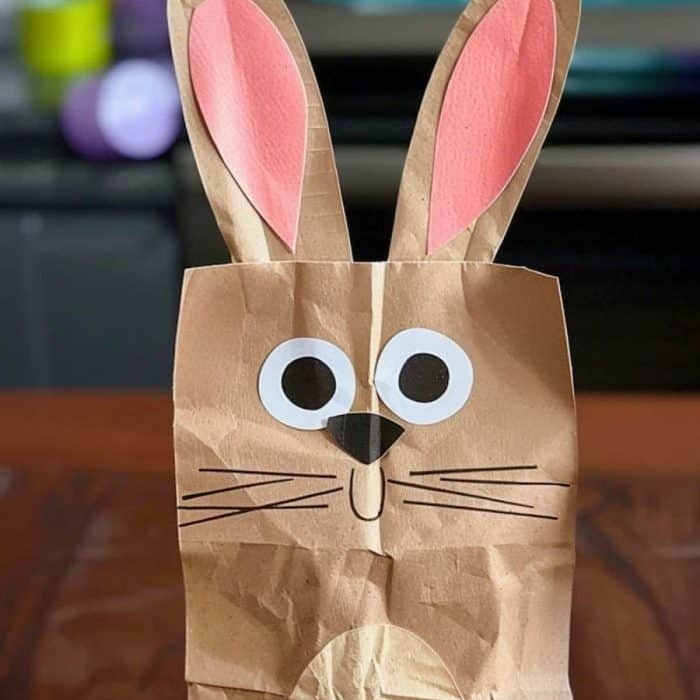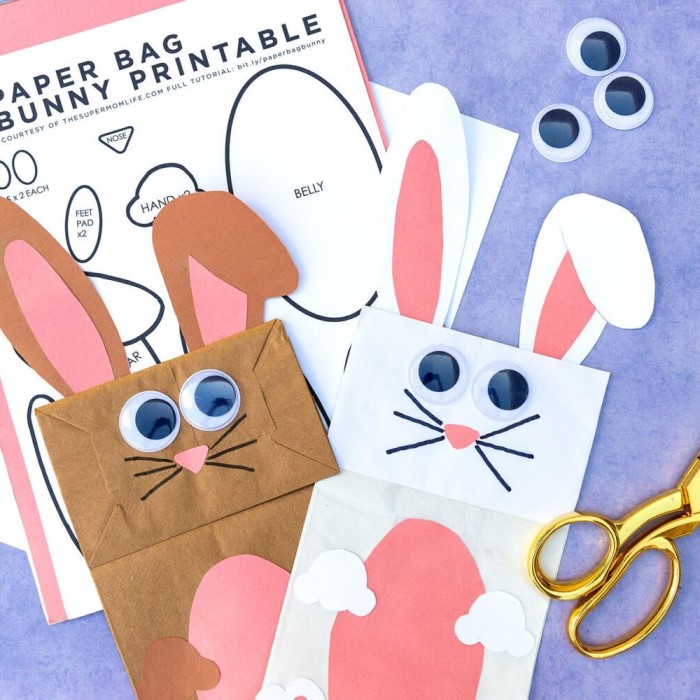Introduction to Paper Bag Craft and its Importance
In a rapidly changing world, it is crucial to find innovative ways to engage children in learning experiences that stimulate their creativity and practical skills. Paper bag craft is an excellent method for combining creativity and education through hands-on experiences. This versatile craft not only allows children to create imaginative projects but also serves as an effective introduction to key STEM (Science, Technology, Engineering, and Mathematics) concepts. By utilizing everyday materials such as paper bags, children can embrace a resourceful approach to learning.

While paper bag crafts may appear deceptively simple, they can be employed to teach various essential concepts including balance, weight, structure, and design. As children manipulate and craft, they learn valuable lessons about physics, engineering, and art. This blog delves into how paper bag crafts promote STEM learning and offers a variety of project ideas to inspire the creativity of young minds.
Understanding the Basics
Paper bag crafts involve using paper bags as the primary material for constructing a range of projects. These crafts can be conducted in classrooms, homes, or any group setting, allowing them to appeal to a wide audience. They are both cost-effective and environmentally friendly, making them a favorite choice among educators and parents alike.
The Importance of Paper Bags
Paper bags are an ideal crafting material due to several factors:
- Availability: They are easily accessible, often found in most households, which allows for spontaneous crafting sessions.
- Recyclability: By using paper bags, children learn about sustainability and the importance of reusing materials. This fosters an environmental consciousness at a young age.
- Cost-Effectiveness: Crafting with paper bags requires minimal investment, making it an economical choice for materials.
The Benefits of Paper Bag Crafts
- Promotes Creativity: Engaging in crafts encourages children to think creatively. Art and craft activities provide them with opportunities to express ideas and thoughts visually.
- Enhances Problem-Solving Skills: Throughout the crafting process, children face challenges that necessitate problem-solving capabilities. This skill is vital not only in art but also in various areas of STEM education.
- Encourages Teamwork: Many projects can be designed for teams, where children learn to collaborate and communicate effectively, important traits in group dynamics.
- Supports Fine Motor Skills: The dexterity required to cut, fold, and glue paper enhances children’s fine motor skills, which are essential for other developmental milestones.
- Adaptable for All Ages: Paper bag crafts can be modified for different age groups. Complex designs can be provided for older children, while simpler tasks can engage the younger ones.
These benefits underscore the value of incorporating paper bag crafts into educational settings.
Craft Ideas to Enhance STEM Learning
1. Paper Bag Puppets
Making paper bag puppets is one of the simplest and most enjoyable paper bag craft ideas. For this activity, children can utilize markers, fabric scraps, buttons, and any other materials they have available to bring their puppets to life. Not only does this activity involve creativity, but it also encourages children to engage in storytelling as they create characters and narratives.
STEM Learning Outcome: In addition to artistic expression, puppetry introduces fundamental design concepts, enhancing spatial awareness and encouraging narrative development—key elements in both art and education.
2. Paper Bag Science Projects
Children can engage with scientific principles by transforming paper bags into various science projects. They can build models of wind tunnels, simple rockets, or even working volcanoes using paper bags and other materials. This hands-on approach allows them to explore basic concepts of physics and chemistry.
STEM Learning Outcome: Crafting scientific projects fosters inquiry-based learning, encouraging children to hypothesize, test, and evaluate their findings.
3. Paper Bag Structures
Challenge older children to construct structures using only paper bags. They can create towers, bridges, or miniature buildings, all with the same material. Providing a challenge can spark creativity and problem-solving abilities.
STEM Learning Outcome: This activity emphasizes essential engineering concepts, including understanding stability, balance, and design principles.
4. Paper Bag Math Games
Mathematics doesn’t have to be boring! Engage children in math by creating educational games using paper bags. For instance, they can design a “Math Challenge Bag,” where each problem solved leads to storing colored counters inside the bag. This integrates math skills with hands-on crafting.
STEM Learning Outcome: By incorporating math into a concrete project, children solidify their understanding of quantitative concepts and improve their computational skills.
Environmental Awareness
Incorporating environmental awareness into crafting enhances the educational value of paper bag crafts. Teaching children about recycling and sustainable practices can be seamlessly integrated into crafting sessions.
Discuss the Lifecycle of Paper
- Understanding Paper Production: Start by explaining that paper primarily comes from trees. The process of making paper involves cutting down trees and converting them into pulp, which is then processed to create sheets of paper.
- Environmental Impact: Discuss how traditional paper production can lead to deforestation, loss of biodiversity, and habitat destruction. Highlight that when forests are cut down to harvest trees for paper, it not only affects wildlife but also contributes to increased carbon emissions that contribute to climate change.
- The Importance of Recycled Paper: Emphasize the significance of using recycled paper. Recycling paper helps reduce the number of trees cut down, conserves energy, and minimizes waste sent to landfills. Explain that recycled paper production uses fewer resources and generates less pollution than making paper from virgin materials.
- Encouraging Responsible Sourcing: Highlight the importance of sourcing paper products responsibly. Teach kids to look for products made from recycled content or certified by organizations that ensure sustainable forestry practices, such as the Forest Stewardship Council (FSC).
- Avoiding Waste: Discuss the importance of minimizing unnecessary waste during paper production and consumption. Encourage children to think critically about their paper usage, such as using both sides of a sheet or opting for digital formats when possible.
Create Eco-Friendly Projects
- Fostering Creativity with Recycled Materials: Challenge kids to think about sustainability through hands-on projects. Encourage them to create items from materials they may otherwise discard.
- Crafting Bags from Old Newspapers: Provide instruction on how to transform old newspapers into eco-friendly bags. This project not only showcases their creativity but also emphasizes the reuse of materials.
- Step-by-Step Instructions: Give a brief overview of the steps involved, such as folding, cutting, and pasting to create sturdy bags. Encourage kids to personalize their bags with drawings or messages about environmental awareness.
- Using Magazines and Packaging: Extend the crafting activity by encouraging the use of old magazines and leftover packaging materials to make various crafts. Kids can create bookmarks, collages, or decorative items, fostering resourcefulness and creativity.
- Promoting a Sustainable Mindset: Use these projects as opportunities to develop a sustainable mindset in children. Challenge them to think about how they can upcycle everyday items and reduce waste in their lives.
Impact of Plastic
- Discussing Plastic Pollution: Take the time during your crafting session to discuss the pervasive issue of plastic pollution. Explain how plastics contribute significantly to environmental degradation, including harm to wildlife and ecosystems.
- Effects on Wildlife: Illustrate how plastic waste can entangle animals or be ingested, leading to serious health problems for wildlife. Provide examples of animals affected by plastic pollution, making the topic relatable and impactful for kids.
- Significance of Alternatives: Encourage kids to consider responsible alternatives to plastic, specifically emphasizing how using paper bags is a more environmentally friendly option. Highlight how paper bags, especially those made from recycled materials, can help reduce the volume of plastic in landfills and oceans.
- Empowering Responsible Choices: Empower children to make informed choices in their everyday lives. Discuss ways they can replace single-use plastics with sustainable options. This could extend beyond bags to items like reusable water bottles, utensils, and containers.
By combining crafting with environmental education, children can develop a sense of responsibility towards the planet, making them aware of their contributions as global citizens.
FAQs
How to make the easiest paper bag?
Creating the simplest paper bag requires just a sheet of paper. To make it easy, follow the steps below:
- Begin with a sheet of paper: An old newspaper or craft paper works well.
- Fold in Half: Fold the paper lengthwise to create a crease down the center.
- Fold the Top Edges: Bring the top edges towards the center fold to form the bag’s sides.
- Secure the Bottom: Fold the bottom edge up and secure it with tape or glue.
- Decorate: Optionally, children can personalize their bags by decorating them with markers or stickers.
And voila! You have a simple homemade paper bag.
Is it cheaper to make paper bags?
Creating paper bags can indeed be more affordable than purchasing pre-made ones, especially when utilizing scrap or recycled materials. Beyond cost, crafting your own bags fosters creativity and can highlight the importance of sustainability. It’s an engaging way to emphasize environmental responsibility and resourcefulness.
Conclusion
In summary, paper bag craft offers an enriching method for engaging children in STEM education. It fosters creativity, experimentation, and a hands-on approach to learning that helps them draw connections between various concepts. Through the exploration of vibrant projects utilizing paper bags, children not only develop essential skills but also gain an appreciation for the environment and the materials they use.
As illustrated throughout this blog, the creative possibilities are vast. Whether making puppets, developing science experiments, constructing structures, or implementing math games, paper bag crafts can be tailored to suit varied interests and age groups. These activities promote collaborative skills and encourage young minds to think critically and innovatively.
Encouraging children to engage in paper bag crafts is not just about crafting; it’s about creating valuable educational experiences that intertwine creativity, science, engineering, and the arts. So gather some paper bags, unleash the creative potential in your children, and embark on a crafting adventure filled with learning and fun!








